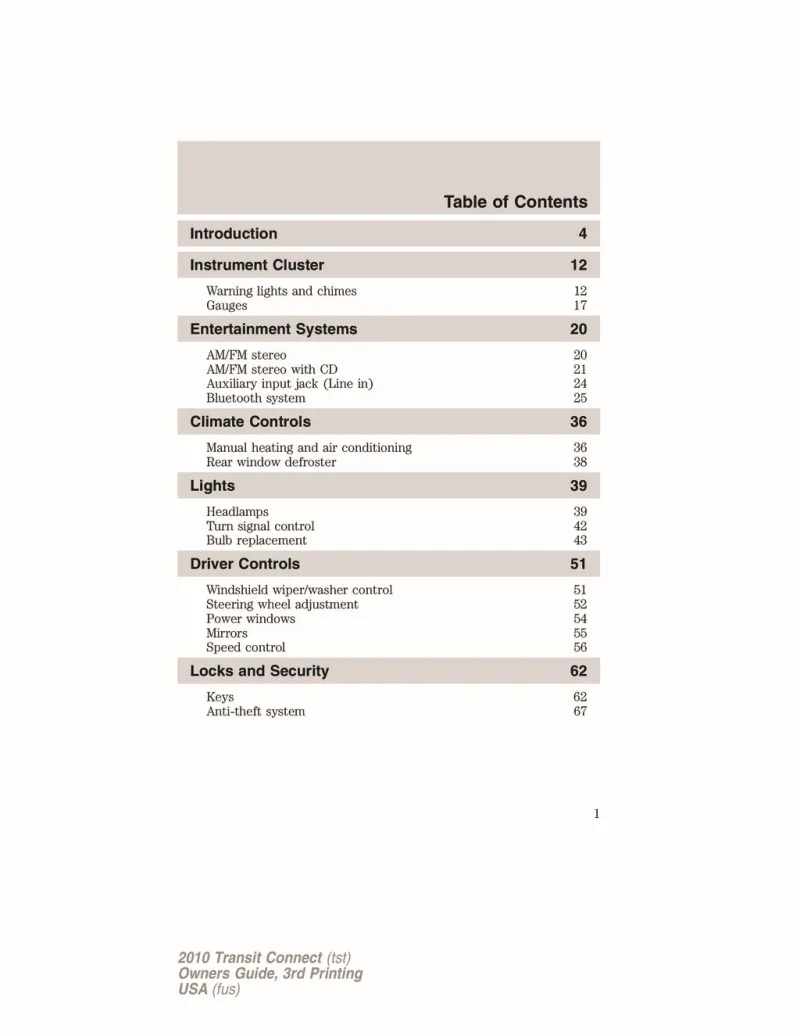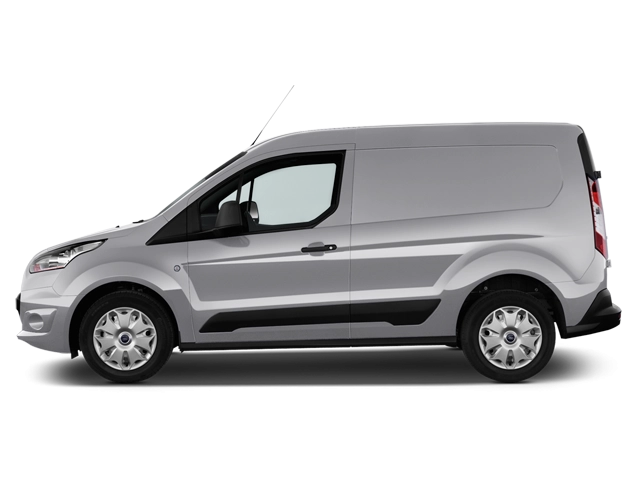2010 Ford Transit Connect Owner's Manual

Table of Contents
2010 Ford Transit Connect Overview
Introduction
The 2010 Ford Transit Connect stands out in the compact van segment, designed with versatility and functionality in mind. This practical vehicle caters to small business owners, urban dwellers, and families alike, offering a mix of impressive cargo capacity, maneuverability, and user-friendly features. Whether you're transporting goods or passengers, the Transit Connect proves to be a robust and reliable option ideal for various lifestyles.
Powertrains
Under the hood of the 2010 Transit Connect lies a spirited 2.0-liter four-cylinder engine. This powertrain delivers a commendable output of 136 horsepower and 128 lb-ft of torque, ensuring a balanced blend of power and efficiency. The Transit Connect is paired with a four-speed automatic transmission that provides smooth shifts and reliable performance in diverse driving conditions. It offers an EPA-rated fuel economy of approximately 22 mpg in the city and 25 mpg on the highway, making it an economical choice for both short trips and longer journeys.
Trims
The 2010 Ford Transit Connect is available in two primary trims: the XL and the XLT. The XL serves as the base model, featuring essential amenities to keep you comfortable and connected. Upgrading to the XLT adds enhancements such as upgraded seating materials, alloy wheels, and power accessories, creating a more upscale driving experience tailored to those seeking additional comfort and convenience.
Features
Designed with practicality in mind, the 2010 Transit Connect comes equipped with a host of features that enhance usability. Standard equipment includes a tilt steering wheel, air conditioning, and a low step-in height for easier access. The interior is thoughtfully designed with a focus on cargo capacity, offering up to 135 cubic feet of cargo space with its rear seats folded. Optional features like Bluetooth connectivity, a navigation system, and upgraded audio systems elevate both efficiency and enjoyment while on the road.
Owner's Manual
The owner's manual for the 2010 Ford Transit Connect serves as an essential guide for maximizing the vehicle's potential. It provides important information on maintenance schedules, troubleshooting tips, and detailed explanations of features and technologies. By following the guidelines in the owner's manual, owners can ensure their Transit Connect operates smoothly and remains in excellent condition for years to come.
User manual download
The Ford Transit Connect owner manual for the 2010 model year is to be found in PDF downloadable format on this page. The owner manual for the model year 2010 is free and in English, but the repair manuals are usually not easy to get and may cost more.
Manual Questions
Fill the form below and someone will help you!

